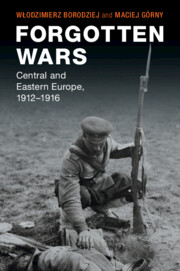Book contents
- Forgotten Wars
- Studies in the Social and Cultural History of Modern Warfare
- Forgotten Wars
- Copyright page
- Contents
- Figures
- Maps
- Capsules
- Additional material
- Introduction
- Part I The Fronts
- Part II The Rear
- 5 The Hinterland
- 6 The Hunger for Information
- 7 Loyalties
- Part III Occupation
- Afterword
- Select Bibliography
- Index
6 - The Hunger for Information
from Part II - The Rear
Published online by Cambridge University Press: 15 March 2021
- Forgotten Wars
- Studies in the Social and Cultural History of Modern Warfare
- Forgotten Wars
- Copyright page
- Contents
- Figures
- Maps
- Capsules
- Additional material
- Introduction
- Part I The Fronts
- Part II The Rear
- 5 The Hinterland
- 6 The Hunger for Information
- 7 Loyalties
- Part III Occupation
- Afterword
- Select Bibliography
- Index
Summary
The spy craze that consumed the authorities of the combatant states was based on the belief that certain groups of civilians were privy to secret information that they were eager to pass on to the enemy. This proposition may have been true in regard to a few individuals, but in relation to society as a whole, or even a part thereof, it was nonsense. There is no better proof of this than the enormous hunger for up-to-date information that was felt by the populations of all the warring states. Civilians generally did not possess or provide the enemy with valuable information, yet they themselves often felt confused and were keen, if not desperate, to satisfy their own curiosity. This is evidenced by the extraordinary popularity of the newspapers (so-called war tourism) and all manner of rumours and gossip. Relatively new media – cinema and modern museums – were also harnessed in the service of information and propaganda.
Keywords
- Type
- Chapter
- Information
- Forgotten WarsCentral and Eastern Europe, 1912–1916, pp. 199 - 218Publisher: Cambridge University PressPrint publication year: 2021

